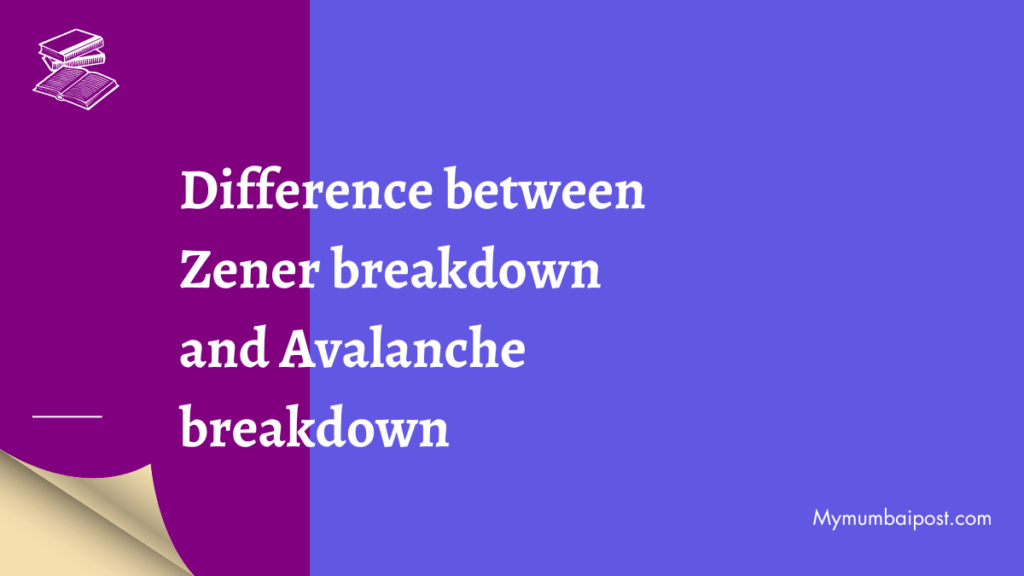
Explore Key Difference between Zener breakdown and Avalanche breakdown
Greetings! Today, we will delve into the fascinating world of electrical breakdowns and explore the difference between two common phenomena – zener breakdown and avalanche breakdown. Join me on this electrifying journey!
10 Difference between Zener breakdown and Avalanche breakdown
Zener breakdown and avalanche breakdown are two different mechanisms by which a PN junction can undergo breakdown when the reverse bias voltage exceeds a certain threshold value. While both of these breakdown mechanisms occur in the depletion region of a PN junction, they differ in their physical processes and characteristics. Here are 10 differences between Zener breakdown and avalanche breakdown:
Mechanism: Zener breakdown occurs due to the quantum mechanical tunneling of electrons across the depletion region, whereas avalanche breakdown occurs due to the collisional ionization of atoms.
Voltage range: Zener breakdown occurs at a lower reverse bias voltage range (< 5V), while avalanche breakdown occurs at a higher reverse bias voltage range (> 5V).
Temperature dependency: Zener breakdown is temperature dependent and the breakdown voltage decreases with increasing temperature, while avalanche breakdown is not significantly temperature dependent.
Reverse current: In Zener breakdown, the current increases rapidly at breakdown voltage and saturates, while in avalanche breakdown, the current increases continuously with increasing voltage.
Carrier generation: In Zener breakdown, the carriers generated are minority carriers, while in avalanche breakdown, the carriers generated are majority carriers.
Efficiency: Zener breakdown is more efficient than avalanche breakdown in terms of power dissipation.
Voltage tolerance: Zener breakdown is suitable for applications where a precise voltage reference is required, while avalanche breakdown is suitable for applications where a wider voltage range is required.
Also Read: Understand the Difference between profit maximization and wealth maximization
Device geometry: Zener breakdown is observed in heavily doped PN junctions with a sharp depletion region, while avalanche breakdown is observed in lightly doped PN junctions with a gradual depletion region.
Frequency response: Zener breakdown is suitable for high-frequency applications due to its fast response time, while avalanche breakdown is not suitable for high-frequency applications due to its slow response time.
Reverse recovery time: Zener breakdown has a short reverse recovery time, while avalanche breakdown has a long reverse recovery time.
Understanding the differences between Zener breakdown and avalanche breakdown is important for selecting the appropriate PN junction for a specific application. Each mechanism has its unique characteristics, and selecting the correct one can result in better performance and efficiency of the device.